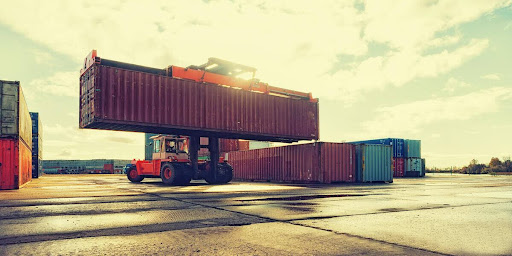Business
A Roadmap to Effective Equipment Shipping

In industries where heavy equipment is indispensable, the need for efficient shipping solutions becomes paramount. Whether it’s construction, mining, agriculture, or manufacturing, the transportation of heavy machinery requires careful planning, specialized handling, and adherence to safety regulations. In this article, we’ll delve into the nuances of heavy equipment shipping, exploring the challenges involved and the best practices to ensure seamless transportation. Here provided more info.
The Importance of Proper Planning
Before embarking on the shipping process, thorough planning is essential. This involves assessing the size, weight, and dimensions of the equipment, as well as considering any special requirements for transportation. Additionally, factors such as distance, route, and mode of transport need to be carefully evaluated to optimize efficiency and minimize costs.
Choosing the Right Shipping Method
There are several methods available for transporting heavy equipment, each with its own advantages and limitations:
Flatbed Trucks: Ideal for short to medium distances, flatbed trucks offer versatility and accessibility, allowing for easy loading and unloading of equipment.
Container Shipping: Suited for international transportation, container shipping provides security and protection for heavy machinery, ensuring safe delivery across long distances.
RORO (Roll-on/Roll-off) Shipping: Commonly used for large and wheeled equipment such as bulldozers and excavators, RORO shipping involves driving the equipment onto a specialized vessel for transport.
Specialized Trailers: For oversized or irregularly shaped equipment, specialized trailers equipped with hydraulic systems and adjustable ramps are used to facilitate transportation.
Securing Proper Permits and Documentation
Depending on the size and weight of the equipment, as well as the chosen shipping route, permits and documentation may be required to ensure compliance with local regulations. This may include oversize/overweight permits, customs clearance documents, and transportation licenses. Failure to obtain the necessary permits can result in delays and legal complications, underscoring the importance of thorough documentation.
Implementing Safety Measures
Safety should always be a top priority when shipping heavy equipment. Properly securing the equipment with chains, straps, and braces is essential to prevent shifting or damage during transit. Additionally, ensuring that the equipment is adequately protected from environmental factors such as moisture, corrosion, and impact is crucial for maintaining its integrity. This website has different services.
Working with Experienced Professionals
Given the complexity of heavy equipment shipping, partnering with experienced logistics providers is highly recommended. These professionals have the expertise and resources to handle all aspects of the shipping process, from planning and coordination to execution and delivery. By entrusting the task to seasoned professionals, businesses can streamline operations and mitigate risks associated with transportation.
Incorporating Technology for Efficiency
Advancements in technology have revolutionized the logistics industry, offering innovative solutions for optimizing efficiency and reducing costs. From GPS tracking and route optimization software to real-time monitoring systems, leveraging technology can enhance visibility and control throughout the shipping process. By harnessing these tools, businesses can track their equipment in transit, anticipate potential delays, and make informed decisions to ensure timely delivery.
Budgeting for Shipping Costs
Shipping heavy equipment can be a significant expense, requiring careful budgeting to avoid cost overruns. Factors such as distance, mode of transport, insurance coverage, and additional services (e.g., loading/unloading, customs clearance) all contribute to the overall shipping costs. By obtaining multiple quotes from different providers and negotiating favorable terms, businesses can optimize their shipping budget and achieve cost-effective transportation solutions.
Addressing Environmental Concerns
In addition to economic and logistical considerations, it’s important to address environmental concerns associated with heavy equipment shipping. Minimizing carbon emissions, reducing fuel consumption, and implementing sustainable practices are increasingly becoming priorities for businesses seeking to minimize their environmental footprint. Exploring eco-friendly transportation options such as hybrid vehicles, electric trucks, and alternative fuels can contribute to greener shipping practices while aligning with corporate sustainability goals.
Overcoming Challenges in International Shipping
When shipping heavy equipment internationally, additional challenges may arise due to varying regulations, customs procedures, and logistical complexities. It’s essential to work with freight forwarders or shipping agents who specialize in international transportation to navigate these challenges effectively. They can provide invaluable assistance in completing paperwork, coordinating with customs authorities, and ensuring compliance with import/export regulations of different countries.
Insurance Coverage and Risk Management
Despite careful planning and precautionary measures, unforeseen events such as accidents, natural disasters, or theft can occur during transit. Having comprehensive insurance coverage is essential to protect against financial losses associated with damage or loss of equipment. Businesses should carefully review their insurance policies to ensure adequate coverage for the value of the equipment and any potential liabilities during transportation. Additionally, implementing risk management strategies, such as conducting thorough inspections before and after shipping, can help minimize risks and ensure swift resolution of any issues that may arise.
Communication and Coordination
Effective communication and coordination among all stakeholders involved in the shipping process are paramount to its success. This includes the equipment manufacturer, shipping company, freight forwarder, customs brokers, and any other relevant parties. Regular updates, clear instructions, and timely responses to inquiries can help prevent misunderstandings and delays, facilitating smooth operations from start to finish.
Conclusion
Heavy equipment shipping presents unique challenges that require careful planning, expertise, and attention to detail. By understanding the intricacies of the shipping process and implementing best practices, businesses can ensure the safe and efficient transportation of their valuable assets. From selecting the appropriate shipping method to securing permits and documentation, every aspect of the process plays a crucial role in achieving successful outcomes. By prioritizing safety, efficiency, and environmental responsibility, businesses can navigate the complexities of heavy equipment shipping with confidence and peace of mind.






















